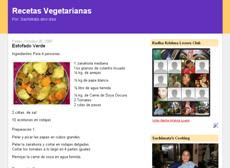Wednesday, April 26, 2017
Who are you, Human?
The Cosmic Laws Of Harmony
Monday, March 6, 2017
Tulasi Worship
 Tulasi is worshiped with mantras that are spoken directly to Tulasi Devi.
Tulasi is worshiped with mantras that are spoken directly to Tulasi Devi.The three mantras for Tulasi Devi are as follows:
The first mantra is for offering obeisances, bowing down (pancanga pranam):
vrindaai tulasi devyai priyaai kesavasya ca,
When collecting leaves from the plant, the following mantra should be chanted:
tulasya mrta janmasi, sada tvam kesavapriya,
The mantra for circumambulating the Tulasi tree:
yani kani ca papani brahma hatya dikani ca,
So there are three mantras, one for bowing down, one for circumambulating, and one for collecting the leaves. The collecting of leaves should be done once in the morning for worshiping and for putting on the plates of foodstuff to be offered. On each bowl or plate there should be at least one leaf.

To worship Tulasi devi, one sings this prayer:
ye tomara sarana loy, tara vancha purna hoy
mora ei abhilasa, vilasa kunje dio vasa
ei nivedana dhara, sakhira anugata koro
dina krsna-dase koy, ei yena mora hoy
1) O Tulasi, beloved of Krsna, I bow before you again and again. My desire is to obtain the service of Sri Sri Radha and Krsna.
2) Whoever takes shelter of you has his wishes fulfilled. Bestowing your mercy on him, you make him a resident of Vrndavana.
3) My desire is that you will also give me a residence in the pleasure groves of Sri Vrndavana-dhama. Thus within my vision I will always behold the beautiful pastimes of Radha and Krsna.
4) I beg you to make me a follower of the cowherd damsels of Vraja. Please give me the privilege of devotional service and make me your own maidservant.
5) This very fallen and lowly servant of Krsna prays, "May I always swim in the love of Sri Sri Radha and Govinda."
Wednesday, June 23, 2010
Physical Beauty
.
.
Tuesday, June 22, 2010
Material Body
Therefore the living entity must accept a particular type of body awarded to him by maya, the material energy, according to his karma. One cannot independently say, “Give me a body like this” or “Give me a body like that.” One must accept whatever body is offered by the material energy. This is the position of the ordinary living being.
Yet the body is temporary, and only foolish, materialistic persons, who do not have full knowledge of the soul, regard the temporary body as reality and engage in decorating this body. Both of these pitfalls—rejection of the body as false and acceptance of the body as all in all—can be avoided when one is fully situated in Krishna consciousness.
As one changes an old garment, so the individual living being also changes his body, and this change of body is called death. Death is therefore a process of changing the body at the end of the duration of the present life. An intelligent person must be prepared for this and must try to have the best type of body in the next life. The best type of body is a spiritual body
Monday, June 21, 2010
Absolute Power, Absolute Corruption
Sunday, June 20, 2010
Heaven Vs Original Spiritual World?
 But this concept of heaven fits in with the upper planetary systems in the (material) universe, where people are pious entities who follow the laws of God, and they have good material sense gratification.
But this concept of heaven fits in with the upper planetary systems in the (material) universe, where people are pious entities who follow the laws of God, and they have good material sense gratification. So, the real goal of life is to go back to Godhead, back to the original Spiritual Kingdom of God. But in the Spiritual Kingdom of God, there is no material sense gratification. Everything is in relationship to the service of the Lord.
So, the real goal of life is to go back to Godhead, back to the original Spiritual Kingdom of God. But in the Spiritual Kingdom of God, there is no material sense gratification. Everything is in relationship to the service of the Lord.Taking Shelter of Krishna
Posted by:
Gandharvika dd. ISV
.
Friday, August 15, 2008
Varuni Beverage for Lord Balaram
Wednesday, July 30, 2008
Sachimata's Recipes - Vegetarian Pizza

Crust:
2 ounces package active dry yeast
1 1/2 teaspoon sugar
1 cup warm water (100-110 deg. F)
3 cups white flour
Pizza Toppings:
1 ounce dry basil
5 tablespoons olive oil
1/2 cup pitted olives
1 cup grated Cheddar cheese
2 cup crumbled Mozarella cheese
1 cup diced red bell pepper
1 cup diced seeded tomatoes
3 tomatoes sliced
1 zucchini sliced
1/4 broccoli chopped
2.- Add flour to yeast mix and blend well.
3.- Place in a greased or oiled bowl, and cover with a warm damp cloth.
4.- Allow to rise in a warm place until double in bulk, around 1 hour.
5.- Punch down dough and pat out onto an oiled (or cornmeal dusted) pizza pan to form the crust.
6.- Bake in a preheated 450° F oven for 8 minutes.
7.- Place olive oil, 1 cup diced seeded tomatoes, salt in blender and process until smooth.
8.- Spread mixture onto baked pizza crust evenly.
9.- Add 3 tomatoes sliced, 1/2 cup pitted olives, 1 cup grated cheddar cheese, 2 cup crumbled mozarella cheese, 1 cup diced green bell pepper, 1 zucchini sliced, 1/4 broccoli chopped . Sprinkle with salt and pepper dry basil and bake at 360° for 10 minutes. Bake until pizza is heated through and cheeses melt, about 10 minutes. Cut into squares.
Offering to Krishna.
More recipies...
.
Wednesday, June 4, 2008
Cologne Ratha Yatra
.
Wish you all a happy KC day.
Cleveland Ratha-Yatra

.
Tuesday, March 4, 2008
Dukka
Fran from Redland Bay in Queensland, Australia writes:
“Hey Kurma, where have you been? I read your blog every day and missed your stuff. Anyway, tell me, do you have a recipe for Dukkah?
My reply: Thanks for asking. Things have been busy here on the home front, but nothing earth-shatteringly bloggable, although I did prepare a stunning batch of lime marmalade this morning.
Here’s the recipe (not for the marmalade):
Egyptian Crumbly Spice & Nut Dip (Dukkah)
Dukkah is a loose, coarsely-ground mixture of sesame seeds, hazelnuts and aromatic cumin and coriander. It is delicious eaten on oil-dunked bread for breakfast, or as a snack. It has of late started appearing quite regularly on restaurant menus as an appetizer, hence its inclusion in this chapter.
Variants of dukkah are found all over the Middle East, and this version is from Egypt. It is a very personal and individual mixture that varies from one family to another; hence no two versions are exactly the same.
The important thing to remember about dukkah is that it should be dry and crumbly. It is easy to over-grind the ingredients, especially the nuts, which makes the mixture too oily. To prevent this, cool the ingredients after roasting, then proceed slowly. Makes about 2½ cups.
½ cup hazelnuts ¾ cup sesame seeds ½ cup coriander seeds ½ cup cumin seeds 1 teaspoon salt ½ teaspoon pepper olive oil and crusty bread for serving
Preheat the oven to 180? C / 350° F.
Roast the hazelnuts on an oven tray for about 15 minutes, or until fragrant. Remove them from the oven, and when a little cool, rub away as much of the brown skin from the nuts as you can.
Toast the sesame seeds in a heavy frying pan over moderate heat, stirring often, for about 4 minutes, or until golden brown and aromatic. Empty the toasted seeds into a bowl. Toast the coriander seeds in a similar manner for about 2-3 minutes. Repeat for the cumin, toasting for about 2 minutes.
Pound the seeds and nuts using a mortar and pestle, or whiz them in a spice or coffee grinder. The mixture should be dry and crumbly, not oily. Combine the crushed nuts and seeds with the salt and pepper.
Serve as a dip with olive oil and crusty bread.
Note: The mixture will keep in a sealed container for many weeks.
Monday, December 17, 2007
Non-grain Flours
Here's my list of non-grain flours, some you may not have encountered.
Arrowroot flour: The rootstalks of a tropical plant are the source of this flour, often used as a thickener for sauces and desserts; the finely powdered arrowroot turns completely clear when dissolved (giving gloss to sauces), and adds no starchy flavor. Because of its easy digestibility, it is also an used as an ingredient in cookies intended for infants and young children. I use it as a grain-free substitute to corn flour (cornstarch for all US readers).
Buckwheat flour: A common ingredient in pancake mixes, buckwheat flour is also used to make Japanese soba noodles. It is available in light, medium, and dark varieties (the dark flour boasts the strongest flavor), depending on the kind of buckwheat it is milled from. You can make your own buckwheat flour by processing whole white buckwheat groats in a blender or food processor.
Chestnut flour: This tan flour is made from chestnuts, the meaty, lowfat nuts that are often served as a vegetable. The flour is a little sweet and is traditionally used in Italian holiday desserts. Italian shops sell it.
Potato flour (potato starch): Steamed potatoes are dried and then ground to a powder to make this gluten-free flour, which is commonly used in baked goods for Jewish Passover (when wheat flour may not be used).
Quinoa flour: Higher in fat than wheat flour, quinoa flour makes baked goods more moist. You can make your own quinoa flour by processing whole quinoa in a blender; stop before the flour is too fine - it should be slightly coarse, like cornmeal.
Tapioca flour: Milled from the dried starch of the cassava root, this flour thickens when heated with water and is often used to give body to puddings, fruit pie fillings, and soups. It can also be used in baking.
Water-chestnut flour (water-chestnut powder): This Asian ingredient is a fine, powdery starch that is used to thicken sauces (it can be substituted for cornstarch) and to coat foods before frying to give them a delicate, crisp coating.
I am sure this is not a complete list. I also encountered flatbreads made from banana flour whilst in India. If anyone has any more to add to this list, let me know.
.
What did ISKCON ever do for us?
Yet there are some devotees who refuse to admit that ISKCON has ever helped them in their lives and tend to only focus on the negative issues. Whenever I end up in a conversation with such a person I think of this clip from a film (paid for in part by George Harrison) - enjoy!
.


.jpg)
.jpg)
.jpg)
